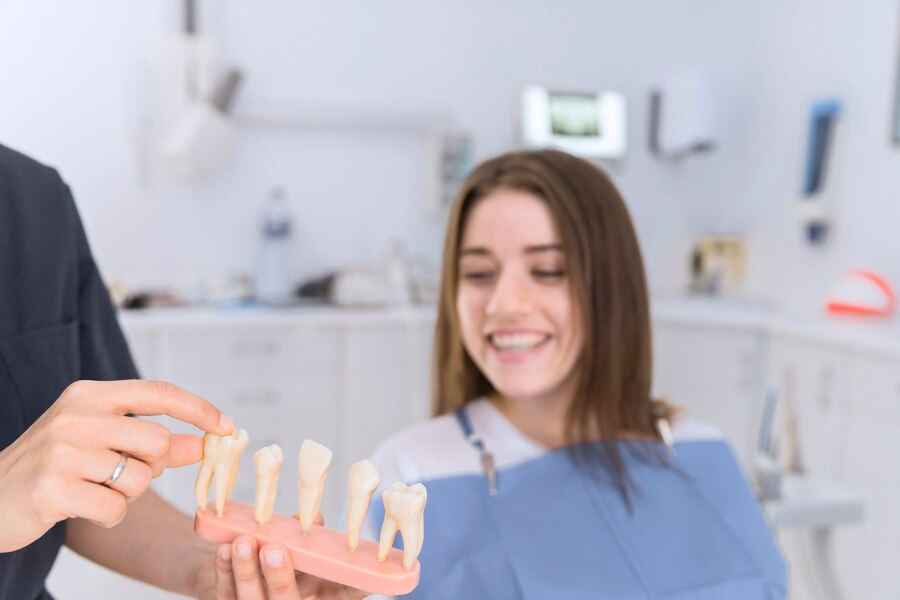Dental implants have revolutionized modern dentistry, offering a long-lasting solution to tooth loss and providing patients with restored function and aesthetics. Traditionally, titanium has been the material of choice for dental implants due to its excellent biocompatibility and mechanical properties. However, in recent years, zirconia has emerged as a viable alternative, sparking a debate among clinicians and researchers about which material offers superior outcomes. In this comprehensive exploration, we delve into the properties, advantages, disadvantages, and clinical implications of titanium and zirconia dental implants to provide a deeper understanding of their roles in contemporary implant dentistry.
Understanding Titanium Dental Implants
Titanium dental implants have been the gold standard for decades, primarily due to their exceptional biocompatibility and osseointegration properties. Titanium implants are typically made from commercially pure titanium or titanium alloys, such as Ti-6Al-4V, which exhibit favorable mechanical strength and corrosion resistance. The success of titanium implants is attributed to their ability to form a direct bond with the surrounding bone tissue, known as osseointegration, which ensures long-term stability and durability.
Advantages of Titanium Dental Implants:
- Biocompatibility: Titanium is inherently biocompatible, meaning it is well-tolerated by the human body and elicits minimal immune response, reducing the risk of rejection or allergic reactions.
- Osseointegration: Titanium implants facilitate strong osseointegration, whereby bone tissue grows around the implant surface, providing stability and support for prosthetic restorations.
- Mechanical Strength: Titanium implants possess excellent mechanical properties, including high tensile strength and fatigue resistance, ensuring longevity and durability in function.
- Versatility: Titanium implants are suitable for a wide range of clinical scenarios, including single-tooth replacements, multiple-tooth restorations, and full-arch rehabilitations.
- Established Track Record: Titanium implants have a long history of clinical success and extensive research backing, instilling confidence among clinicians and patients alike.
Despite these advantages, titanium dental implants are not without limitations. One notable concern is the potential for peri-implantitis, a condition characterized by inflammation and bone loss around the implant site, which can compromise long-term implant stability and necessitate remedial treatment.
Exploring Zirconia Dental Implants
Zirconia, a ceramic material derived from zirconium dioxide, has gained traction as an alternative to titanium for dental implant applications. Zirconia implants offer unique properties that differentiate them from titanium and address some of the limitations associated with metal-based implants. Zirconia implants are typically manufactured using either yttria-stabilized tetragonal zirconia polycrystal (Y-TZP) or partially stabilized zirconia, each exhibiting distinct mechanical and aesthetic characteristics.
Advantages of Zirconia Dental Implants:
- Aesthetics: Zirconia implants boast excellent aesthetic properties, closely resembling natural teeth in color and translucency, making them particularly suitable for patients with thin gingival biotypes or high smile lines.
- Biocompatibility: Zirconia is biocompatible and hypoallergenic, offering an inert material surface that minimizes the risk of adverse reactions or inflammatory responses.
- Reduced Peri-Implantitis Risk: Zirconia implants demonstrate a lower affinity for plaque accumulation compared to titanium, potentially reducing the risk of peri-implantitis and soft tissue complications.
- Thermal Insulation: Zirconia implants exhibit lower thermal conductivity than titanium, reducing sensitivity to temperature changes and enhancing patient comfort.
- Metal-Free Option: Zirconia implants provide a metal-free alternative for patients with metal sensitivities or those seeking holistic dental treatment options.
However, despite these advantages, zirconia implants also present certain limitations and considerations that warrant attention.
Disadvantages of Zirconia Dental Implants:
- Brittle Material: Zirconia is inherently more brittle than titanium, making it susceptible to fracture under excessive mechanical loads or improper occlusal forces, particularly in posterior regions with high masticatory forces.
- Limited Clinical Longevity Data: While zirconia implants have shown promising short-to-medium-term outcomes, long-term clinical data are still limited compared to titanium implants, necessitating further research to assess their durability and success rates over extended periods.
- Manufacturing Challenges: The fabrication of zirconia implants involves complex machining processes and requires specialized equipment and expertise, potentially leading to higher production costs and limited availability.
- Complications with Cement-Retained Restorations: Zirconia implants are primarily designed for screw-retained restorations due to concerns regarding the bonding strength of dental cements to zirconia surfaces, which may increase the risk of restoration debonding or fracture.
- Limited Prosthetic Options: Zirconia implants may have fewer prosthetic options available compared to titanium implants, particularly regarding angulated screw channels or customized abutments, which could restrict treatment versatility in complex cases.
Clinical Considerations and Future Directions
The choice between titanium and zirconia dental implants should be guided by various factors, including patient-specific considerations, anatomical factors, aesthetic demands, and clinician preference. While titanium implants remain the gold standard with a proven track record of success, zirconia implants offer a compelling alternative for select cases, particularly those with aesthetic concerns or metal sensitivities.
Moving forward, ongoing research and advancements in materials science and implant technology are likely to further refine the properties and performance of both titanium and zirconia implants. Hybrid implant systems, combining the benefits of titanium and zirconia materials, are also being explored to optimize clinical outcomes and expand treatment options for patients.
Conclusion
In the realm of implant dentistry, the choice between titanium and zirconia dental implants represents a crucial decision that requires careful consideration of various clinical and patient-related factors. While titanium implants have long been the cornerstone of implant therapy, zirconia implants offer a promising alternative with unique aesthetic and biocompatible properties. By weighing the advantages, disadvantages, and clinical implications of each material, clinicians can make informed decisions to provide optimal treatment outcomes and patient satisfaction in the ever-evolving landscape of dental implantology.

